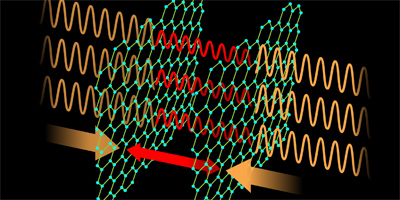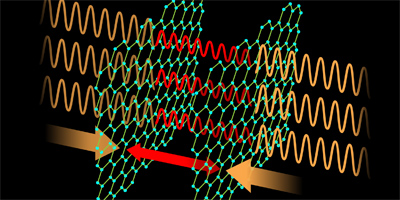Tuning Casimir Forces
When two uncharged metallic mirrors are placed sufficiently close in a vacuum, fluctuations in the quantum vacuum field create an attractive force between them, known as the Casimir force. But if the mirrors are made of graphene, instead of a metal, something different can happen in the presence of a magnetic field. Writing in Physical Review Letters, Wang-Kong Tse and Allan MacDonald at the University of Texas at Austin investigate a possible method for controlling and even eliminating the Casimir force in this manner.
The scheme exploits the emergence of discrete Landau energy levels in graphene, arising from the quantum Hall effect induced by a strong magnetic field. The Casimir effect thus becomes dependent on the Hall conductivity, which in turn leads to the quantization of the Casimir force and allows tuning it electrically between repulsive and attractive values. The authors’ calculations show that the Casimir force can be strongly suppressed when one of the mirrors is charge neutral. The predicted effect should also hold for a sphere-and-plate mirror combination, an important geometry for studying Casimir effects due to the difficulty of keeping two planes perfectly parallel to each other.
A key motivation for suppressing the Casimir force is provided by the efforts to examine gravitational attraction at short distances (a few micrometers), over which theories have predicted non-Newtonian behavior. At these distances, the Casimir force exceeds gravitational attraction by far. The authors’ scheme would solve this problem and allow more sensitive and direct measurements of gravitational attraction. – Daniel Ucko





